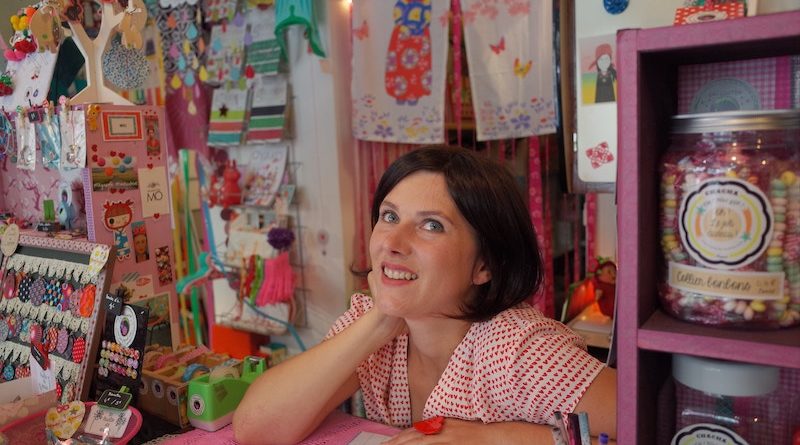Entrepreneurship is one of the main lifelines of positive economic activity in a country. Not only does it enable healthy competition, triggers innovation and introduces new products as well as services, it greatly contributes to economic development, productivity and job creation. While many barriers still exist for entrepreneurs leading their start-up lives from getting financed and scaling up, the latest report by OECD also suggests that access to venture capital (VC) may also be limited due to asymmetric information, policy barriers and most importantly social norms that may result in missed opportunities for growth, disruptive innovation and employment. Unsurprisingly, this is more likely to happen to women-led or founded start-up than those of their male counterparts.
Unsurprisingly, start-ups founded by women struggle to attract the same level of venture capital financing as those founded by men, a new OECD (Organization for Economic Co-operation and Development)report offers more evidence.
According to the Levelling The Playing Field: Dissecting the gender gap in the funding of start-ups, the likelihood of funding for all-male start-ups is 10% higher than for those with at least one female founder. When start-ups with one or more women founders secure funding, they tend to receive a third less: averaging USD nine million per firm versus USD 13 million for male-led start-ups. Thus the ‘penalty’ of having a woman’s presence in a team is economically large. Analysis of the gap suggests that other than gender stereotypes, there is also an issue with women being held back by a lack of STEM or CEO experience.
The gender gap in securing funding is most visible in Europe, is only marginally significant in the US and is negligible in Asia. For start-ups that receive funding, the gender gap in the amount is similar for Europe and the US and less significant in Asia.
The OECD report looks at some 70,000 start-ups around the world using data from Crunchbase, a platform that links venture capitalists with start-ups. Of the start-ups in the sample, only 15 percent have a woman among their founders and less than six percent have all-women founders. This is a much more pronounced gender gap than for entrepreneurship in general. The highest shares of female founders are in Italy and the US. The lowest shares are in Denmark, the Netherlands and Sweden.
In order to close or even narrowing the gender gap requires a deeper understanding of the underlying mechanisms of this ever-widening disparity – and not just from a policy making point of view; issues stemming from societal pressures, social norms and collective mindset direly needs a thorough exploration to challenge and consequently dismantling it.
Case in point, a discussion on the Pakistani blogsphere revolving around Catalyst’s recently released names of women in top tier position at S&P 500 companies, presented divergent – bordering to – misogynistic views. While some shared exasperation about even discussing the topic with a gender lens, others plonked the ‘best-person-gets-the-job’ idea to some even accusing the discussion being sexist.
Both biased societal mindset and institutionalized discrimination of venture funding for women-led startups should be identified, addressed and pro-active measures ought to be taken to bridge the gap. This could, according to the OECD report, include government-funded capital funds targeting women, nudging investors or awareness campaigns. A more organic approach could also be through inclusion of policies that tackle the gender gap in the education system as well as the labor market.
Ensuring a robust pipeline of female entrepreneurs
The need to work on enabling a robust pipeline of female entrepreneurs makes financial sense as it is a fast growing sector, considering women already control $20 trillion in consumer spending and are also responsible for up to 80 percent of purchase decisions worldwide. While the number of female entrepreneurs have grown by 10 percent from 2015 to 2017 according to a Data2X round-table report Data Driving Action for Women Dialogue Series: The Business Case, a Mckinsey report reiterates that the global GDP could increase by 26 percent or $28 trillion only if it is financially inclusive.
That said, the financial sector is also characterized by a similar gender gap where women-led start-ups and female entrepreneurs are less likely to receive bank financing or private equity funding, reveals the OECD report. A challenge also highlighted in the Data2x report that showed globally female business owners are still not accessing the credit they need to fuel their businesses. Women owned SMEs based in emerging economies have unmet credit needs with the ‘gender gap in even account ownership remaining at seven percentage points since 2011 and at nine percentage points in developing countries.’
Creating a business case to tap into the immense possibilities of an inclusion-driven economy, where female led firms receive more than the seven percent of the venture capital financing which they presently receive or encouraging the financial sector to better serve the women’s market, entails work not just at the grassroots. It needs governments and the corporate sector to be aligned and synchronized in their approach as far as countering gender bias and inclusive policies are concerned. Moreover, it needs – as the OECD report concludes – more initiatives to address gender bias through promoting women in leadership roles. Lastly and to move forward, it is important to realize that the untapped women’s market opportunity can only be better served through data production that helps the financial sector properly understand women’s financial behaviors and needs. Until then, rest assured society will keep on losing half of its potential and development – economic and one that is sustainable – will remain inadequate.
Photo by Remy Baudouin on Unsplash











